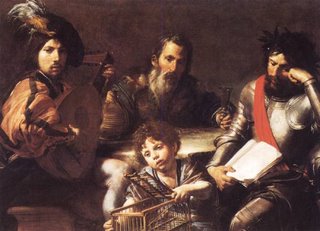
I wrote yesterday about the Kali-yuga, the age of corruption.
Here’s an extract about the four Yugas or ages from Hindu Mythology, Vedic and Puranic by WJ Wilkins (first published in London in 1882):
"The four Yugas – viz. the Krita, Treta, Dvapara, and Kali – have characteristic qualities. The Krita is the golden, and Kali the iron age. The Mahabharata gives these characteristics very distinctly.
‘The Krita is that age in which righteousness is eternal. In the time of that most excellent of Yugas everything had been done (Krita), and nothing remained to be done. Duties did not then languish, nor did the people decline. Afterwards, through the influence of time, this Yuga fell into a state of inferiority. In that age there were neither gods, spirits, angels or demons; no buying and selling went on, no efforts were made by men; the fruit of the earth was obtained by their mere wish; righteousness and abandonment of the world prevailed. No disease or decline of the organs of sense arose through the influence of age; there was no malice, weeping, pride or deceit; no contention, no hatred, cruelty, fear, affliction, jealousy, or envy. Hence the Supreme Brahma was the transcendant resort of these Yogis. Then Narayana (Vishnu), the soul of all beings, was white. In that age were born creatures devoted to their duties. They were alike in the object of their trust, in observance, and in their knowledge. At that period the castes, alike in their functions, fulfilled their duties, were unceasingly devoted to one deity, and used one mantra, one rule, and one rite. They had but one Veda (sacred text, of revealed knowledge).
Understand now The Treta, in which sacrifice commenced, righteousness decreased by a fourth, Vishnu became red; and men adhered to truth, and were devoted to a righteousness dependent on ceremonies. Then sacrifies prevailed, with holy arts and a variety of rites. In the Treta mean acted with an object in view, seeking after reward for their rites and their gifts, and no longer disposed to austerities, and to liberality from duty. In this age, however, they were devoted to their own duties and to religious ceremonies.
In the Dvapara age, righteousness was diminished by two quarters, Vishnu became yellow, and the Veda fourfold. Some studied four Vedas, some three, others two, and some none at all. The scriptures being thus divided, ceremonies were celebrated in a great variety of ways; and the people, being occupied with austerity and the bestowal of gifts, became full of passion. Owing to ignorance of the one Veda, Vedas were multiplied. And now from the decline of goodness, few only adhered to truth. When men had fallen away from goodness, many diseases, desires and calamities caused by destiny, assailed them, by which they were severely afflicted, and driven to practise austerities. Others, desiring enjoyments and heavenly bliss, offered sacrifices. Thus, when they had reached the Dvapara, men declined through unrighteousness.
In the Kali, righteousness remained to the extent of one-fourth only. Arrived in that age of darkness, Vishnu became black; practices enjoined by the Vedas, works of righteousness, and rites of sacrifices ceased. Calamities, deseases, fatigue, faults, such as anger etc, distresses, anxiety, hunger, fear prevailed. As the ages revolve, righteousness again declines; when this takes place, the people also decline. When they decay, the impulses which actuate them also decay. The practices generated by this declension of the Yugas frustrate men’s aims. Such is the Kali Yuga, which has existed for a short time. Those who are long-lived act conformity with the character of the age.' … 'Four thousand years are specified as the duration of life in the Krita Yuga, three thousand in the Treta, and two thousand form the period at present established on earth in the Dvapara. There is no fixed measure in the Kali.’
Painting: The Four Ages of Man, by Valentin de Boulogne, oil on canvas, National Gallery, London.

No comments:
Post a Comment